
One of the most radical adrenaline sports, bungee jumping first became popular in the 1990s and continues to grow worldwide. There are different methods of flinging yourself through space with bungee cords, but all provide death-defying thrills. While New Jersey is not one of the big bungee jumping states, opportunities exist. Nearby states offer more options for those willing to travel.
History
Bungee jumping began thousands of years ago as a rite of passage on Pentecost Island in the Pacific Ocean. The men of the island built towers more than 80 feet high and jumped from them using vines tied around their ankles. In 1979, the Oxford University Dangerous Sports Club performed the first modern bungee jump off the Clifton Suspension Bridge in Bristol, England. Not until the late 1980s did bungee jumping become a commercial activity, when A.J. Hackett opened the first public jump site in New Zealand.
Equipment
Bungee jumping requires two essential pieces of equipment--bungee cords and a harness. It is of obvious importance that the highest-quality equipment is used. Cords are made of “natural rubber” and stretch between two and four times the original length. A group of four or five cords are typically bundled together for redundancy and strength. Harnesses are made of padded webbing and securely attach around the ankles, which is what the cord is attached to for head-first jumping. Typically a rock-climbing harness will also be worn on the body as a backup and for a more comfortable ride back up post-jump.
Types
There are a few different ways a bungee cord can be used to catapult a human through the air, some of which are more easily found in New Jersey than others. Traditional bungee jumping involves diving, jumping or being dropped from a bridge or tall building, free falling until the cord snaps you back. Reverse bungee or “bungee rocket” starts the jump from the ground with the other end of the stretched cord hooked to a crane. When released, the jumper “rockets” upward. The “twin tower” is where two cords are stretched from side-by-side towers and attached to the jumper in the middle. This is the safest type, easiest to find and is often a feature at amusement parks. Six Flags Great Adventure Park in Jackson, New Jersey, offers this type of jump.
Locations
Bungee clubs are scattered around the United States, but are difficult to find in New Jersey. Aside from the twin tower jump at Six Flags, an “adventure experience” company called Luxergy offers bungee jumping in 10 New Jersey municipalities including Camden, Passaic, Trenton and Newark. For the New Jersey jumper who is willing to travel, Adrenaline Dreams Adventures is a reputable jumping club in Pittsburgh, Pennsylvania.
Tips
Only jump with a reputable organization. Bungee jumping is not a do-it-yourself sport. Know your weight, which is crucially important in choosing the correct cord. Reputable jumping clubs will record your weight and the cord used. Ask the operator if the organization keeps logs of the number of jumps per cord. Cords do experience wear and tear and should be replaced frequently. Finally, most jumps are filmed, and it is well worth it to purchase the movie of your jump to relive the fun and show others.
Related Articles
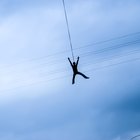
Bungee Jumping in Texas
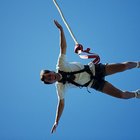
Places to Bungee Jump in Illinois
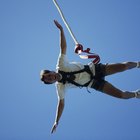
Bungee Jumping Near Phoenix, AZ

Bungee Jumping Locations in South ...
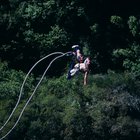
Places to Bungee Jump in Minneapolis, ...
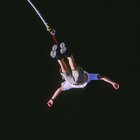
Bungee Jumping in Miami, FL
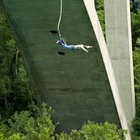
Places to Bungee Jump in Pennsylvania

How to Fix Thong Sandals

What Are Knuckle Rings?
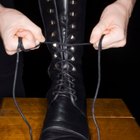
Types of Eyelets

How to Wear Soccer Socks

How to Organize a Charity Sports Event

What Companies Does Nike Own?

The Difference Between Nike Dunks & AF1

How to Attach Adjustable Buckles

Ways to Lace Hyperdunks

Things to Do With Kids in Long Island

Top Cities to Find Single Men Over 40 ...

How to Remove Stainless Steel Links ...

How to Pin a Homecoming Mum
References
Writer Bio
Laurie Junkins has been a writer since 1985 and has been published in "Literary Mama," "Rattle" and numerous other journals. Her work has been nominated for a Pushcart Prize, Best New Poets and Best of the Web. Junkins holds a Bachelor of Arts in English from the University of Washington and a Master of Fine Arts in poetry from the Northwest Institute of Literary Arts.
Photo Credits
bungee jump image by Lovrencg from Fotolia.com